Maharashtra
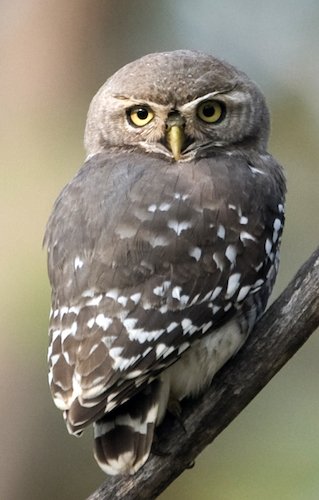
Maharashtra (abbreviation MH) is a state in the western region of India that is spread over nearly 308,000 km2 (119,000 square miles). The east west width is about 870 kilometres and north to south the length is about 600 kilometres and the coastline 840 kilometres. It is bordered by the Arabian Sea to the west, the Indian states of Karnataka and Goa to the south, Telangana to the southeast and Chhattisgarh to the east, Gujarat and Madhya Pradesh to the north, and the Indian union territory of Dadra and Nagar Haveli and Daman and Diu to the northwest. It is India’s second most populous state and third largest. It is also the world’s fourth-most populous subnational entity. It has nearly 134 million inhabitants and its capital, Mumbai, is a megacity with a population of nearly 27 million people. Nagpur with over three million people is Maharashtra’s second capital as well as its winter capital, although only third to Kalyan. Over a dozen cities in the state have more than a million residents. It is one of the most industrialised states of the Indian union and India’s financial hub with the largest economy accounting for c.15% of India’s GDP. The service sector dominates the economy, although half the working population is employed in agriculture.
Forests cover more than 20% of the state’s geographical area. The dominant physical feature of the state is its plateau character, which is separated from the Konkan coastline by the mountain range of the Western Ghats, which runs parallel to the coast from north to south. The Western Ghats, also known as the Sahyadri Range, has an average elevation of 3,900 feet; it slopes gently towards the east and southeast, where it provides a physical barrier to the state on the west, while the Satpura Hills along the north and Bhamragad-Chiroli-Gaikhuri ranges on the east serve as its natural borders. To the west of these hills lie the Konkan coastal plains, 50–80 km in width. To the east of the Ghats lies the flat Deccan Plateau. The main rivers of the state are the Krishna, and its tributary, Bhima, the Godavari, and its main tributaries, Manjara, and Wardha-Wainganga and the Tapi, and its tributary Purna.
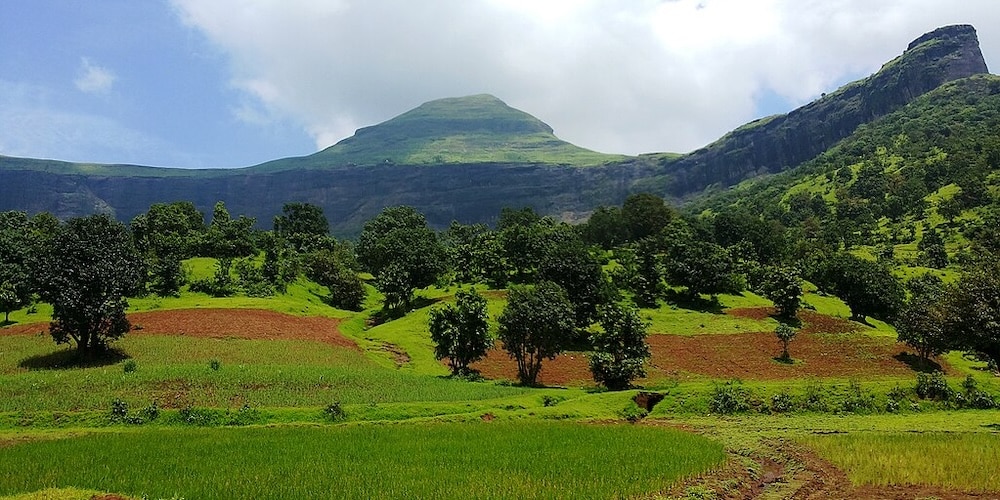
Bramhagiri Hills, Sahyadri Mountain Range (Western Ghats) – ©Coolgama CC BY-SA 4.0 via Wikimedia Commons
Maharashtra is divided into five geographic regions. Konkan is the western coastal region, between the Western Ghats and the sea. Khandesh is the north region lying in the valley of the Tapti, Purna river. Nashik, Malegaon Jalgaon, Dhule and Bhusawal are the major cities of this region. Desh is in the centre of the state. Marathwada, which was a part of the princely state of Hyderabad, is located in the southeastern part of the state. Aurangabad and Nanded are the main cities of the region. Vidarbha is the easternmost region of the state, formerly part of the Central Provinces and Berar. The state has limited area under irrigation, low natural fertility of soils, and large areas prone to recurrent drought. Due to this the agricultural productivity of Maharashtra is generally low as compared to the national averages of various crops. Maharashtra has been divided in to nine agro-climatic zones on the basis of annual rainfall soil types, vegetation and cropping pattern.
Maharashtra experiences a tropical wet and dry climate with hot, rainy, and cold weather seasons. Some areas more inland experience a hot semi-arid climate, due to a rain shadow effect caused by the Western Ghats. The month of March marks the beginning of the summer and the temperature rises steadily until June. In the central plains, summer temperatures rise to between 40 °C and 45 °C. May is usually the warmest and January the coldest month of the year. The winter season lasts until February with lower temperatures occurring in December and January. On the Deccan plateau that lies on eastern side of the Sahyadri mountains, the climate is drier, however, dew and hail often occur, depending on seasonal weather. The rainfall patterns in the state vary by the topography of different regions. The state can be divided into four meteorological regions, namely coastal Konkan, Western Maharashtra, Marathwada, and Vidarbha.
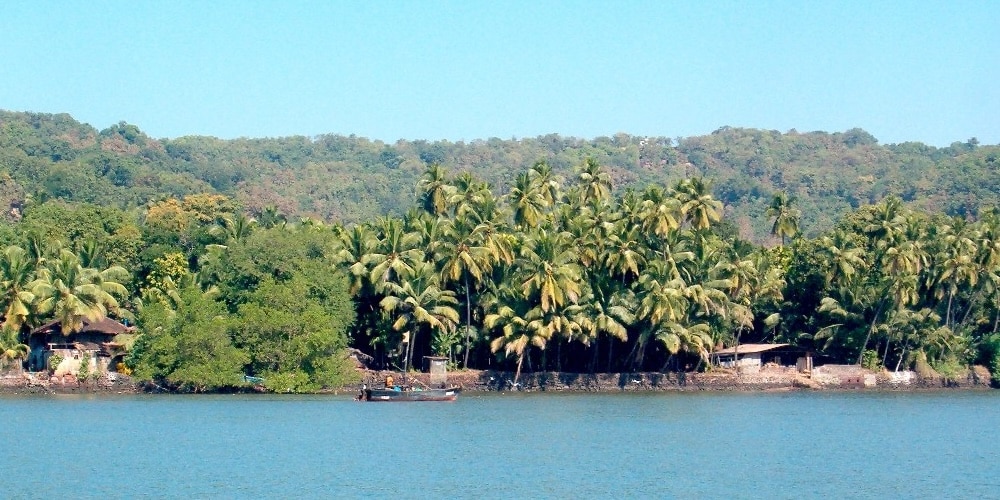
Dabhol Beach, Konkan coast – ©Saishg CC BY-SA 3.0 via Wikimedia Commons
The southwest monsoon usually arrives in the last week of June and lasts till mid-September. Pre-monsoon showers begin towards the middle of June and post-monsoon rains occasionally occur in October. The highest average monthly rainfall is during July and August. In the winter season, there may be a little rainfall associated with western winds over the region. The Konkan coastal area, west of the Sahyadri Mountains receives very heavy monsoon rains with an annual average of more than 120 inches. However, to the east, in the rain shadow of the mountain range, only 20 to 30 inches per year will fall, and long dry spells leading to drought are a common occurrence. The average annual rainfall in the state is 46.5 inches and 75% of it is received during the southwest monsoon from June to September. However, under the influence of the Bay of Bengal, eastern Vidarbha receives good rainfall in July, August, and September. Thane, Raigad, Ratnagiri, and Sindhudurg districts receive heavy rains of an average of 80 to 100 inches and the hill stations of Matheran and Mahabaleshwar over 5200 inches. Contrariwise, the rain shadow districts of Nashik, Pune, Ahmednagar, Dhule, Jalgaon, Satara, Sangli, Solapur, and parts of Kolhapur receive less than 40 inches annually. In winter, a cool dry spell occurs, with clear skies, gentle air breeze, and pleasant weather that prevails from October to February, although the eastern Vidarbha region receives rainfall from the north-east monsoon.
The state is home to six UNESCO World Heritage Sites: Ajanta Caves, Ellora Caves, Elephanta Caves, Chhatrapati Shivaji Terminus (formerly Victoria Terminus), the Victorian Gothic and Art Deco Ensembles of Mumbai and the Western Ghats.
Birding Maharashtra
The state has three crucial biogeographic zones, namely Western Ghats, Deccan Plateau, and the West coast. The Ghats nurture endemic species, Deccan Plateau provides for vast mountain ranges and grasslands while the coast is home to littoral and swamp forests. Mammal species present in the state include a number of monkeys, wild pigs, tiger, leopard, gaur, sloth bear, sambar, four-horned antelope, chital, barking deer, mouse deer, small Indian civet, golden jackal, jungle cat, and hare. Other animals include reptiles such as snake species such as cobras and kraits. The state provides legal protection to its tiger population through six dedicated tiger reserves.
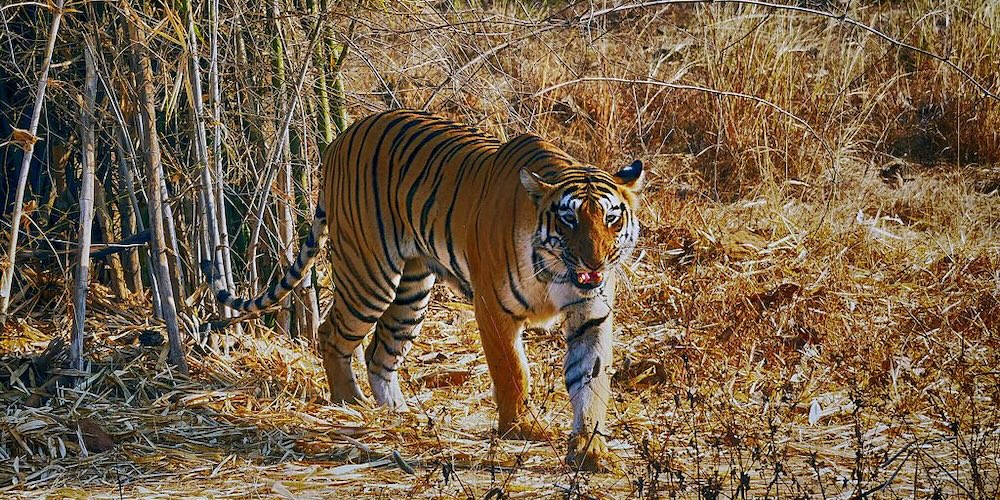
Bengal Tiger, Tadoba Andhari Tiger Reserve – ©AJT Johnsingh, WWF-India & NCF, CC BY-SA 4.0 via Wikimedia Commons
The Avifauna of Maharashtra
The state has a very rich avifauna with more than 650 species recorded from the state so far. If the unique subspecies are considered, then the list is even more. Some time back Prakash Gole classified them as follows: Resident species 255; Local or International migrants 245; Stragglers or irregular visitors 40; Species known to be breeding 168; Species that breed in specific areas only 56; Species about which very little is known 87; Species about which knowledge is fairly good (e.g. Sparrows, Crows etc.) 25. Most of the Vagrants and Stragglers are marine species that are storm driven to the coast during the monsoon months. Most of the migrants are winter visitors; aquatic birds like ducks, geese, gulls, terns, cranes, flamingos, sandpipers etc. A number of harriers, cuckoos, swallows, warblers, chats, pipits and wagtails also arrive here in the cold season from the north or even Europe. Few species like Rain Quail, Pied-crested Cuckoo and Indian Pitta visit us at the beginning of the rainy season. Most of our bulbuls, babblers, sunbirds, munias, larks, woodpeckers, barbets, hornbills and owls are resident birds. Some birds are rare in the state, being sighted only a few times (Ashy Minivet, Imperial Eagle, Scaup, Pelican sp. etc.) There are birds that were thought to be extinct such as Forest Spotted Owlet Athene blewitti, Jerdon’s Courser Cursorius bitorquatus and Pinkheaded Duck Rhodonessa caryophyllacea. Jerdon’s Courser was rediscovered in the adjoining Andhra Pradesh (1986) and Forest Spotted Owlet was re-discovered in the Satpuda forests (1999).
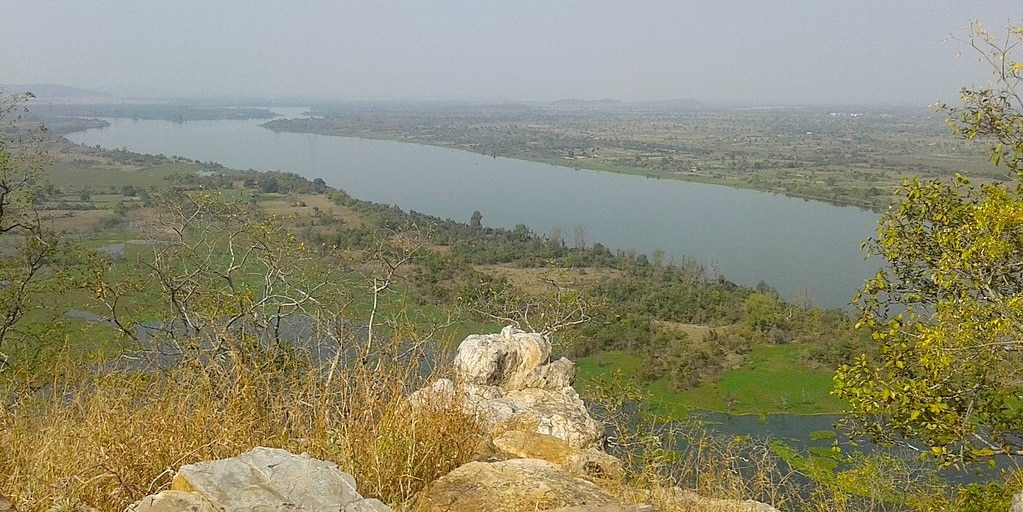
Wainganga River near Bhandara District – ©Bk kartik21, Public domain, via Wikimedia Commons
The most widespread bird in the state is the ubiquitous Jungle Crow Corvus macrorhynchos, which is found in remotest forest patches in Gadchiroli district to the heart of the Mumbai city. Other commoner and abundant birds are the House Crow, House Sparrow, Blue Rock Pigeon, Common Myna, Black Kite, Red-vented and Red-whiskered Bulbuls. The Great Indian Bustard Choriotis nigriceps; once so common on the drier Deccan tableland was reduced to extinction, but later recovered a bit, thanks to the conservation efforts of the state government and some NGO’s. Grey Jungle Fowl Gallus sonneratii a forest bird, is fast losing its ground, but common peafowl Para cristatus is a more fortunate bird because of the protection it has received in some places, thanks to religious sentiments.
Birding Areas
The main birding habitats in the state can be broadly classified into forests, scrub & grass country, fresh water bodies, seashore, cultivated country and urban areas.
About 20% of the total state area is under forest though original forest cover is hardly half of this area. Tropical Deciduous forest is the dominant vegetation type in the state. It is found all over the state in all divisions. Small pockets in the Western Ghats supports Evergreen and Semi-evergreen type. E.g. Bhimashankar, Matheran, Mahabaleshwar, Chandoli etc. Tropical thorn forest is the dominant type throughout the plateau area. The Great Indian Bustard sanctuary is located within this belt.
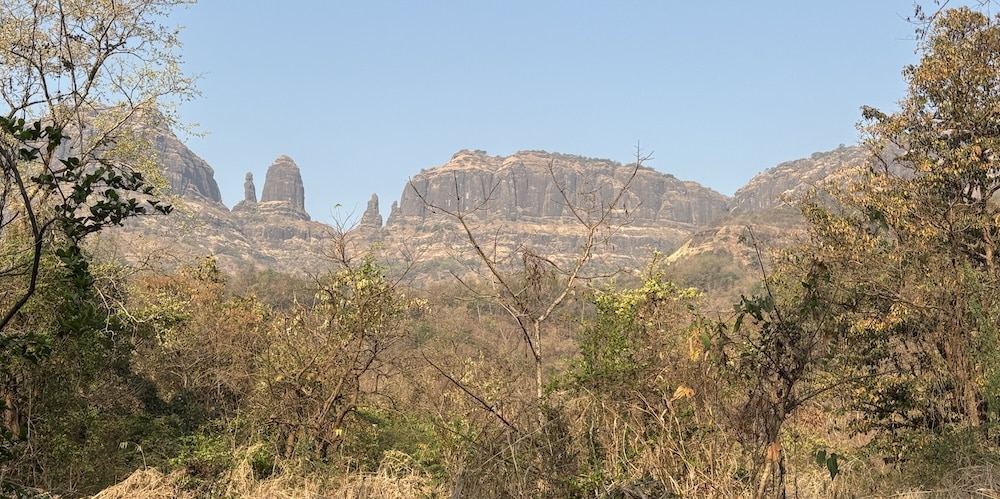
Tansa Wildlife Sanctuary – ©Chris Lotz
Narrow mangrove patches are along the banks of many creeks in the coastal belt. Maharashatra is the state with most reservoirs in the country. The twin districts of Bhandara and Gondia alone have about 13,000 tanks. The Western Ghats are full of large and medium dams. In Konkan, every village has a pond. All these bodies of water are magnets migratory birds in the winter months. Nandur-Madhemeshwar (Nashik); Jaikwadi (Aurangabad); Ujani (Pune-Solapur); Mayani (Satara) and Nawegaon (Bhandara) are some of the most popular birding spots for wetland birds.
Cultivated country has its own unique bird fauna which is mostly graminivorous and insectivorous. In spite of Maharashtra being the most urbanised state, its cities support high bird diversity. Pune city bird checklist has more than 300 species. Mumbai, Nagpur, Nashik, Aurangabad also support equally high bird diversity.
-
Number of bird species: 658
(As at March 2025)State Bird: Green Imperial Pigeon Ducula aenea
-
Avibase
PDF ChecklistThis checklist includes all bird species found in Maharashtra , based on the best information available at this time. It is based on a wide variety of sources that I collated over many years. I am pleased to offer these checklists as a service to birdwatchers. If you find any error, please do not hesitate to report them. -
E-Bird
PDF ChecklistThis checklist is generated with data from eBird (ebird.org), a global database of bird sightings from birders like you. If you enjoy this checklist, please consider contributing your sightings to eBird. It is 100% free to take part, and your observations will help support birders, researchers, and conservationists worldwide.
-
Birds of Maharashtra
| By Satish Pande, Pramod Deshpande & Niranjant Sant | Ela Foundation | 2013 | Paperback | 329 pages, colour illustrations | ISBN: 9788190695589 Buy this book from NHBS.com -
Birds of Western Maharashtra: A Reference Guide
| By Ananad Prasad | Other India Bookstore | 2006 | Paperback | 315 pages, no illustrations | ISBN: 9788185569734 Buy this book from NHBS.com -
Birds of the Mumbai Region
| By Sunjoy Monga | Yuhina Eco-Media | 2016 | Paperback | 400 pages, colour photos, 1 colour map | ISBN: 9788192250991 Buy this book from NHBS.com -
Important Bird Areas of Maharashtra
| (Priority Sites for Conservation) | By Asad R Rahmani, M Zafar-ul Islam, Raju Kasambe & Jayant Wadatkar | OUP | 2014 | Paperback | 174 pages, 77 colour photos, 21 colour maps | ISBN: 9780198098683 Buy this book from NHBS.com -
National Parks and Sanctuaries in Maharashtra
| 2 Volumes | By Pratibha Pande & Neema Pathak | Bombay Natural History Society | 2005 | Paperback | ISBN: 9788190264709 Buy this book from NHBS.com -
Threatened Birds of Maharashtra
| By Asad R Rahmani, Raju Kasambe, Sujit Narwade, Pramod Patil & Noor I Khan | OUP | 2014 | Paperback | 221 pages, 92 colour photos, 39 colour distribution maps, tables | Out of Print | ISBN: 9780199451333 Buy this book from NHBS.com
-
Birds of Maharashtra
Facebook PageOver 58,000 members! -
Bombay Natural History Society
WebsiteThe Bombay Natural History Society (BNHS), a pan-India wildlife research organization, has been promoting the cause of nature conservation since 1883. -
Maharashtra PakshiMitra
WebsiteMaharashtra Pakshimitra has been striving to protect Birds of Maharashtra since the past 20 years. Being a non-profit NGO, we rely on your help in securing funds. -
Mumbai Birdwatchers Club (MBC)
Facebook Page
-
*Bird Sanctuaries of Maharashtra
InformationSatellite ViewInteractive list of sanctuaries -
*Protected areas of Maharashtra
InformationSatellite ViewInteractive list of National Parks, Wildlifew Sanctuaries etc. -
BS Jayakwadi Bird Sanctuary
InformationSatellite ViewMore than 300 species of birds are perched at place. The birds such as Flamingo, Spoonbill, Painted stork, Night heron, White stork, Wagtail, Pin-tailed snipe, Northern shoveler,Sandpiper, Red-naped ibis migrate or roost here for specific time. -
BS Karnala Bird Sanctuary
InformationSatellite ViewThe sanctuary is home to over 222 species birds of which 161 are resident species, 46 are winter migrant species, three are breeding migrants, seven species are passage migrants and five species are vagrant. Following eight species endemic to Western Ghats has been found in Karnala: Grey-fronted Green-pigeon (Treron affinis), Nilgiri Woodpigeon (Columba elphinstonii), Malabar (Blue-winged) Parakeet (Psittacula columboides), Malabar Grey Hornbill (Ocyceros griseus), White-cheeked Barbet (Megalaima viridis), Malabar Lark (Galerida malabarica), Small Sunbird (Leptocoma minima) and Vigor's Sunbird (Aethopyga vigorsii). Five rare birds, the ashy minivet, three-toed kingfisher, Malabar trogon, Slaty-legged Crake (Rallina eurizonoides), and Rufous-bellied Eagle (Lophotriorchis kienerii) have been sighted here. The Sanctuary is also an Important Bird Area (IBA) satisfying A1 (Globally threatened species) and A2 (Restricted-range species) criteria. The sanctuary is also home to 114 species of butterflies. -
BS Mayani Bird Sanctuary
InformationSatellite ViewBirds like the northern shoveller, stork and kingfisher can be found at the sanctuary. Other resident and migratory bird species in the winter season include: coot, brahminy duck, black ibis, painted stork, common spoonbill, etc. -
Maharashtra Wildlife Parks
InformationSatellite ViewMaharashtra state is home to many rare species of flora and fauna in 17 wildlife sanctuaries and national parks. -
NP Chandoli
InformationSatellite ViewNearly 23 species of mammals, 122 species of birds, 20 species of amphibians and reptiles are known to be resident in the forests of Chandoli. Bengal tigers, Indian leopards, Indian bison, leopard cats, sloth bears and Indian giant squirrels are quite conspicuous here. -
NP Gugamal
InformationSatellite ViewThe area is rich in wild mammals including Bengal tiger, Indian leopard, sloth bear, Ussuri dhole, Indian jackal, striped hyena, chausinga, sambar (largest Deer on earth) gaur, barking deer, ratel, flying squirrel, cheetal (type of Deer), nilgai, wild boar, langur, rhesus monkey, and macaque. -
NP Navegaon
InformationSatellite ViewThe Dr Salim Ali Bird Sanctuary, Navegaon is home to almost 60% of the bird species found in entire Maharashtra. Every winter, flocks of beautiful migratory birds visit the lake—a rare treat for the eyes. The national park has diverse type of vegetation ranging from dry mixed forest to moist forest. The forest type is 5 A/C3. Southern tropical dry deciduous forest. -
NP Pench
InformationSatellite ViewThere are over 285 species of resident and migratory birds including the Malabar Pied Hornbill, Indian Pitta, Osprey, Grey-headed Fishing Eagle, White-eyed Buzzard, etc. In winter thousands of migratory waterfowl including Brahmini Duck, Pochards, Barheaded Geese, Coots, etc visit the tanks and the Pench reservoir within the Park… -
NP Sanjay Gandhi (Formerly Borivili National Park)
InformationSatellite ViewThe green jewel of Mumbai - The National Park is known as a real Bird Watcher's Paradise. Did you know that the park is the nesting ground for 274 kinds of birds - that's almost a quarter of all bird species found in India. From the tiny Tickell's Flowerpecker (small Indian bird); many species of beautiful Sunbirds (old word equivalent of the Humming birds) the Paradise Flycatcher, and the elusive Trogon to the majestic White Bellied Sea Eagle, several kinds of Kingfishers, Woodpeckers and Drongos; the forest is truly a visual feast of feathered friends. From the moment you enter the forest, nature's symphony welcomes you with its many unique sounds. The continuous calling of the large Green Barbet, the wildly screeching Parakeets, the metallic calls of the Racket-trailed Drongo and the musical call of the Blue flycatcher. The extremely melodious song of the Malabar Whistling Thrush or the familiar refrain of the Spotted Babler are just a few of the sounds that will be sweet music to your ears. -
Sewri Flamingo Point Bombay
InformationSatellite ViewThe point has large areas of mudflats which are not only a safe habitat for flamingos in winter but also has adequate food availability. A large number of flamingos reach along with their babies from their breeding area, Rann of Kutch in Gujarat, to Sewri every year. They arrive and stay between the month of October to March. Other bird species come to feed at the flats. -
TR Melghat Tiger Project
WebsiteSatellite ViewMelghat tiger reserve is located in the Amaravati district of Maharashtra. Melghat Tiger Reserve is located on the southern offshoot of the Satpura Hill Range in Central India, called Gavilgarh Hill. It is 225 km west of Nagpur. It was established as a wildlife sanctuary in 1967, and was declared a tiger reserve in 1974. It was among the first nine tiger reserves notified in 1973-74 under Project Tiger, a wildlife conservation project initiated in India in 1972 to protect Bengal tigers. It was the first tiger reserve of Maharashtra. It is still one of the biggest tiger reserves in the country in terms of area. The name 'Melghat' means the confluence of various 'ghats' or valleys as is typical from the landscape of this tiger Reserve. -
TR Tadoba Andhari Tiger Project
InformationSatellite ViewTadoba Andhari Tiger Reserve is a Tiger reserve in Chandrapur district of Maharashtra state in central India. It is notable as Maharashtra's oldest and largest National Park. It is one of India's 43 "Project Tiger" - Tiger reserves.… -
WS Gautala Autramghat Sanctuary
InformationSatellite ViewSouthern tropical dry deciduous forest is the main forest type in this track which includes draught resistant trees like Anjan, Khair, Dhawada. Tree height remains less than 10 mts. Hills tops have Sparse vegetation. Slopes are covered with Euphorbia spp. River valleys support moist zone species such as Arjun and Chandan valleys have got diversified vegetation. In the past efforts are done for afforestation area under various plantation schemes together with intensive soil and water conservation works. Grass lands at hill tops, plain growth have good growth grasses. Thus the diversified vegetation scattered intermittently support rich faunal diversity. Particularly it is good for sloth bear habitat and excellent for birds resident as well as migratory… -
WS Nagzira
InformationSatellite ViewNagzira wildlife sanctuary is located between Bhandara district and Gondia district of Maharashtra at . Nagzira Wildlife Sanctuary is locked in the arms of nature and adorned with a picturesque landscape, luxuriant vegetation and serves as a living outdoor museum to explore and appreciate nature. This sanctuary has a number of fish, 34 species of mammals, 166 species of birds, 36 species of reptiles and four species of amphibians.
-
eBird
SightingseBirding This Month
-
BirdQuest
Tour OperatorNORTHWEST INDIA – Specialities of Punjab, Rajasthan, Gujarat, Maharashtra & Kashmir -
Birding Ecotours
Tour OperatorBirding Tour India: The West – Forest Owlet Extension -
Foliage Outdoors
Local Tour OperatorBhigwan and Mayureshwar are two of the best birding destinations in Maharashtra. Bhigwan is a wetland area that attracts a variety of migratory birds during the winter, including Greater Flamingos, Bar-Headed Geese, and Collared Pratincoles. Mayureshwar Wildlife Sanctuary is home to a healthy population of Indian Gazelle (Chinkara) and other mammals, as well as a variety of bird species, such as Indian Eagle Owl, White-Bellied Minivet, and Bonelli's Eagle. -
India Bird Watching
Local Tour Operator Birding tours with experienced bird guides creating ample opportunities to sight and photograph the rare, endemic and fascinating birdlife…Birding Bhigwan -
India Nature
Tour OperatorGeographically at the heart of India, the Central Indian Highlands extend across the states of Madhya Pradesh, Chattisgarh and Maharashtra. They encompass two disjunct, parallel hill ranges, the Satpura Hills and Vindhya Hills, separated by the Narmada River Valley, that hold the largest tract of forest anywhere in India. -
Jungle Buddies
Local Tour OperatorYour Expert Guides to Mumbai Local Birding Tours -
Mumbai Magic
Local Tour OperatorMumbai is a haven for those interested in birding. Many species can be spotted all year round in select green patches of the city... -
Nature Explorers
Local Tour OperatorBirding tours with experienced bird guides creating ample opportunities to sight and photograph the rare, endemic and fascinating birdlife… -
SGNP Birding
Local Tour OperatorMumbai being larger than life megacity, it is also known for its avifauna diversity. With winter comes migrant birds to the one of the phenomenal national park of India - SGNP. Explore one of the most underrated bird watching destination of Mumbai and walk alongside birds for a Sunday morning. -
The Tern Travellers
Local Tour OperatorBhigwan Bird watching trip -
Travers India
Local Tour Operator Birding tours with experienced bird guides creating ample opportunities to sight and photograph the rare, endemic and fascinating birdlife…Bhigwan-Kumbhargaon Beginners Birdwatching Tour -
Treks and Trails India
Local Tour OperatorMatheran Birdwatching Expedition is a beginning path to the cosmos of birds in the most natural woods nearby Mumbai. Matheran is a scenic hill station in the Western Ghats mountain range, near Karjat.
-
2015 [01 January] - Frank Lambert - Rajasthan, Gujarat and Maharashtra
PDF Report...West India also supports huge numbers of wintering birds, in particular raptors and waterbirds, of which we saw plenty, and rarer species such as Hypocolius and Macqueen’s Bustard, both of which gave us outstanding views. Although we recorded just 298 species this included many memorable species such as White-bellied Minivet, White-naped Tit, Indian Spotted Creeper, Green Avadavat, Painted Sandgrouse, Indian Courser, Yellow-eyed Pigeon, five species of vulture, Pallid Scops Owl, Mottled Wood Owl, Sykes’s Nightjar and to finish off, the Critically Endangered Forest Owlet... -
2018 [01 January] - Mike Nelson & Rob Hutchinson - Punjab, Rajasthan, Gujarat and Maharashtra
PDF ReportEurasian Scops Owl was unexpected. The remainder of the Sykes’s trio of Lark and Warbler were added here and a morning along the shores of the Gulf of Kutch delivered an undectet of Crab-Plovers along with many shorebirds and gulls. Our final stop in the dry, deciduous forests of Maharashtra afforded us great views of the once enigmatic Forest Owlet. Overall, we managed 321species with only a single heard only. This along with a smattering of some fine mammals like Indian Wild Ass, Blackbuck, Indian Fox and Smooth Otter combined with some stunning scenery, delicious Indian cuisine and lashings of Masala Chai made for another great trip to West India. -
2020 [02 February] - Mike Nelson - Punjab, Rajasthan, Gujarat and Maharashtra
PDF ReportWith a list of highly endangered and regionally localized birds, western India is a priority tour for birders. From the marshlands of the Punjab down through arid scrubland into the rolling dunes of Desert National Park, the vast expanses of the Kutch and then across to the dry deciduous forests of Maharashtra, this year’s tour covered all of the desired species of the region. -
2022 [01 January]
ReportNashik, an unusual destination for birdwatchers is an ancient city in the northwest region of Maharastra. It is situated beside the Godavari river. -
2023 [02 February] - Hannu Jannes
PDF Reportn epic route through the states of Punjab, Rajasthan and Gujarat, with a short visit to the state of Maharasthra to conclude.
-
Kranti Flamingo Point
Facebook PageThe best place for watching birds. We arrange boat ride for you to watch birds in the Ujani Reservior. We ensure the safety first so that it is necessary to wear life jackets while boating and these jackets will be provided by Kranti flamingo point for every birder. -
The Machan
AccommodationOur property makes a wonderful place for bird enthusiasts, where birds can be spotted from the comfort of their private deck or while taking a trek in the forest. Early risers will be welcomed with the sounds of melodic bird songs and calls. And try standing still in the forest, and the air around you will soon be filled with the chirping of a multitude of birds. -
Tiger Fort Eco Resort
Facebook Pagehe Tiger Fort Eco Resort itself lies near the Pench forest in a region that is one of the top biodiversity in Maharashtra.

